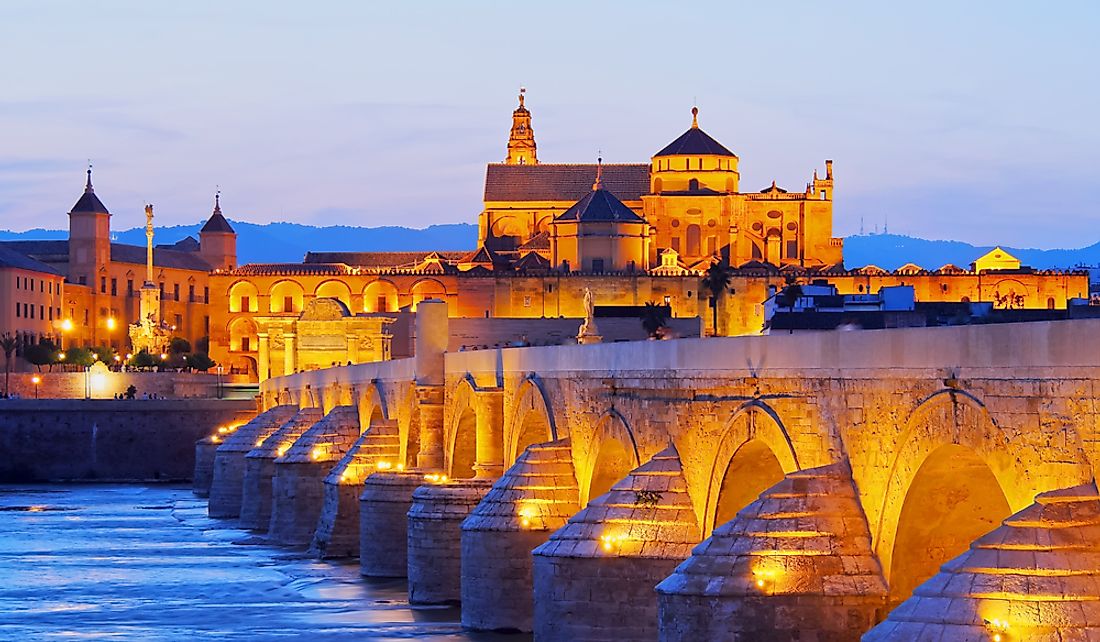City With The Highest Number Of UNESCO World Heritage Sites

World Heritage Sites are areas or landmarks selected by UNESCO for their scientific, historical, or cultural importance. These sites are protected by various global treaties. A World Heritage Site is demarcated as a protected zone by UNESCO. UNESCO’s General Conference adopted the program on November 16, 1972, and by July 2018 there were a total of 1,092 sites in 167 countries. Italy (54 sites) has the most World Heritage sites. Other countries with many sites include China (53 sites) and Spain (47 sites). The city of Cordoba in Spain has the highest number of UNESCO World Heritage Sites in one city.
Which City Has the Most UNESCO World Heritage Sites?
Cordoba has the highest number of World Heritage Sites of any city. Cordoba is the capital of Cordoba Province and is located in the Andalusia region of southern Spain. Cordoba is the 22nd largest Spanish city which occupies an area of about 484 sq miles with a population of over 325,708 people. Cordoba is one of the oldest Spanish towns which began as a Roman settlement before being captured by the Visigoths and then the Umayyad-Caliphate during the 8th century. Cordoba was the biggest city in Europe in the tenth century. In 2018, Cordoba became the first city on earth to have four UNESCO World Heritage Sites in 2018.
The World Heritage Sites in Cordoba
The Great Mosque of Cordoba
The Mosque-Cathedral of Cordoba is a Catholic cathedral that is situated in Andalusia. It is considered one of the twelve treasures of Spain and was the first site to be designated a World Heritage site in Cordoba. The cathedral’s design with its unique domes, horse arches, and decorative tiles is believed to be the most accomplished monument of Moorish-architecture. The original structure constructed in this site was a Visigoth church. Abd al-Rahman I built a huge mosque in this site in 784 which was expanded by other Muslim rulers. The city became a Christian city again in 1236, and the mosque became a Roman Catholic Church.
Medina Azahara
Medina Azahara is the ruins of the large fortified Moorish palace-city that was constructed by Abd-al-Rahman III. It was a de-facto capital city of al-Andalus. Medina Azahara is situated in the western parts of Cordoba. Medina Azahara included barracks, gardens, government and administrative offices, mosques, and ceremonial reception halls. Medina Azahara became a UNESCO World Heritage Site on July 1, 2018.
Alcazar of Cordoba
The Alcazar of Cordoba is a medieval Moorish castle that is situated in Cordoba, right next to River Guadalquivir. The Alcazar was one of the main houses of Ferdinand II of Aragon and his wife. The fortress is a structure with military features whose construction was ordered in 1328 by King Alfonso XI. The fort and its gardens are part of the city’s historical center. The Alcázar de los Reyes Cristianos became a UNESCO World Heritage Site in 1994.
Patios Festival
It is quite rare for UNESCO to declare a festival a World Heritage Site, but the Patios Festival in Cordoba is not a regular event. The festival is an annual local tradition that started in 1918. The event is intended to make all the hidden treasures of Cordoba available to the public. Therefore, during the first 2-weeks of May, numerous historical homes open their patios to everyone.











